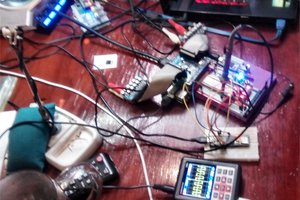Mako DSP Board Prototype 2.0 Specs:
- NXP LPC4337 ARM Cortex M4F/M0 204MHZ Asymmetrical Dual-Core BGA256
- Alliance Memory AS4C8M16S SDRAM 128MBIT
- Arduino Leonardo Hardware Compatible Pinout
- Two 10 pin additional GPIO banks for more I/O
- Wolfson Audio WM8778 24 Bit 96KHZ In/Out Audio Codec
- microSD Card Slot
- USB 2.0 w/ OTG and Host Support
- Dedicated Analog and Digital Supplies for clean audio
- 1A 5VDC for Shield power
- Real time DSP Capable
- USB Code Loading
- ARM Cortex JTAG Debug Support
Mako DSP Board Prototype 1.0/1.6 Specs:
- NXP LPC4337 ARM Cortex M4F/M0 204MHZ Asymmetrical Dual-Core
- Arduino Leonardo Hardware Compatible Pinout
- Two 10 pin additional GPIO banks for more I/O
- Wolfson Audio WM8778 24 Bit 96KHZ In/Out Audio Codec
- microSD Card Slot
- USB 2.0 w/ OTG and Host Support
- Dedicated Analog and Digital Supplies for clean audio
- Real time DSP Capable
 AVR
AVR




 Fabien-Chouteau
Fabien-Chouteau
 Henrik Langer
Henrik Langer
 Patrick
Patrick
 Bela Platform
Bela Platform
where's this at?